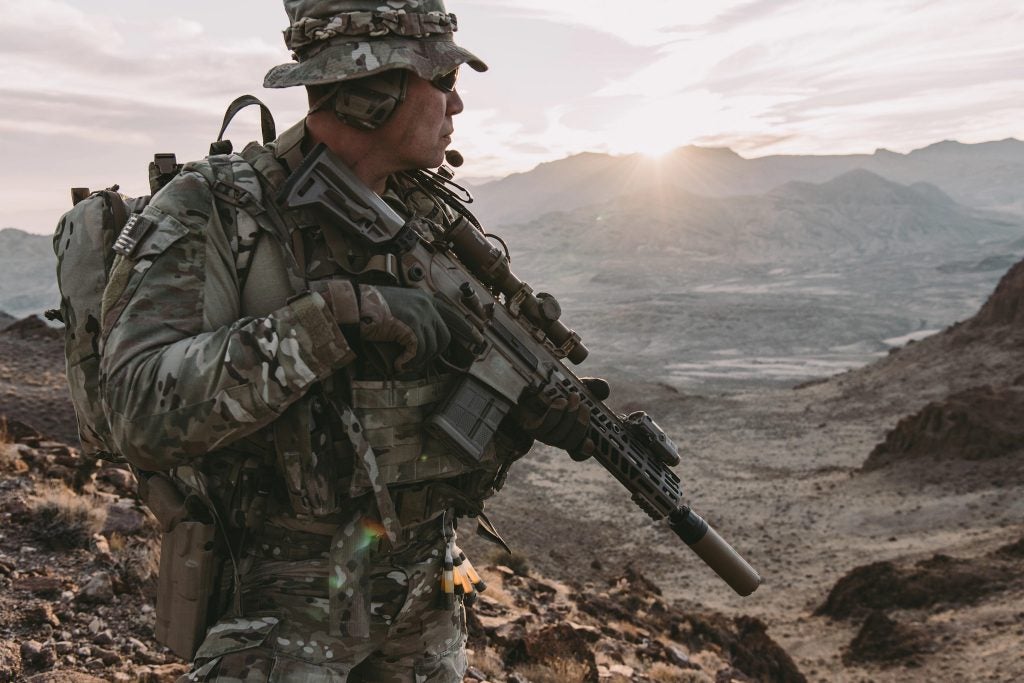US Army Discusses NGSW
On 19 April, the US Army announced that SIG Sauer had won the Next Generation Squad Weapons (NGSW) competition with its 6.8mm hybrid ammunition, MCX Spear and LMG-6.8 selected to equip the US Army’s close combat forces.
The Department of Defense held a Media Round Table event at the Pentagon discussing the NGSW program and how the newly selected weapon systems will be produced, procured, integrated and fielded.
The panel included Brigadier General Larry Burris Jr., Soldier Lethality Cross Functional Team Director, Brigadier General William M. Boruff, Joint Program Executive Officer, Armaments and Ammunition and Colonel Scott Madore, Project Manager Soldier Lethality.
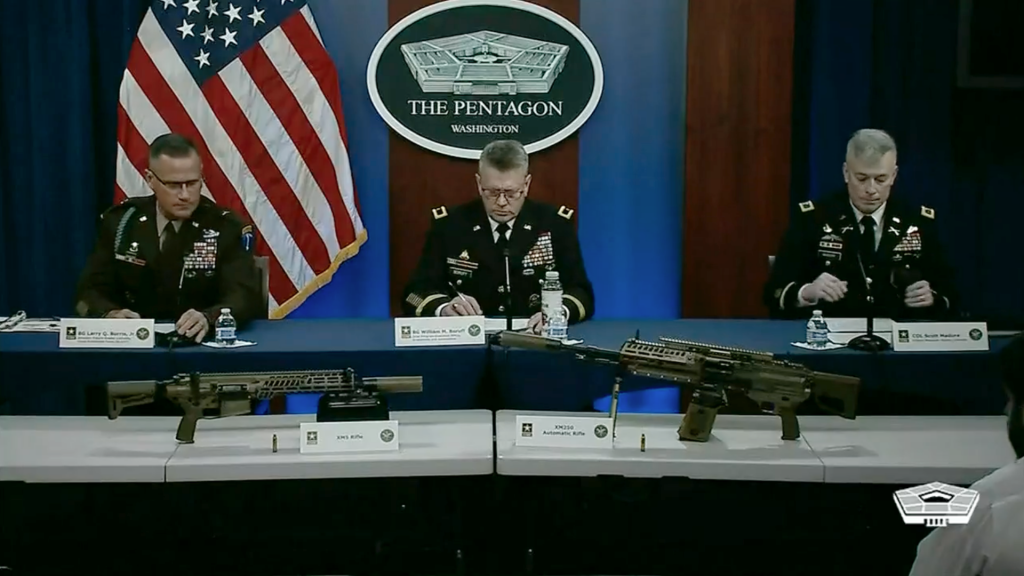
Evaluations
The NGSW program spanned 27 months of competition between the three submissions. This included two rounds of soldier touch points (essentially hands on troop trials that provided feedback to the manufacturers) this phase ended in August-September 2021 and was followed by the source selection phase where rigorous testing was carried out followed by feedback and data analysis. Colonel Scott Madore, Project Manager Soldier Lethality, stated that the weapons were tested as complete systems including the rifle, automatic rifle and integrated cartridge design.
Colonel Madore explained that the SIG Sauer submission was finally deemed to “offer the best value to the government’. The senior officers attending the media briefing declined to comment further on the criteria and what placed SIG Sauer ahead of the pack. It was, however, confirmed officially that Textron had been rejected following the soldier touch points phase as the system submitted was found not to meet Army criteria. Colonel Madore concluded his remarks by describing the NGSW program as a ‘fierce competition’.
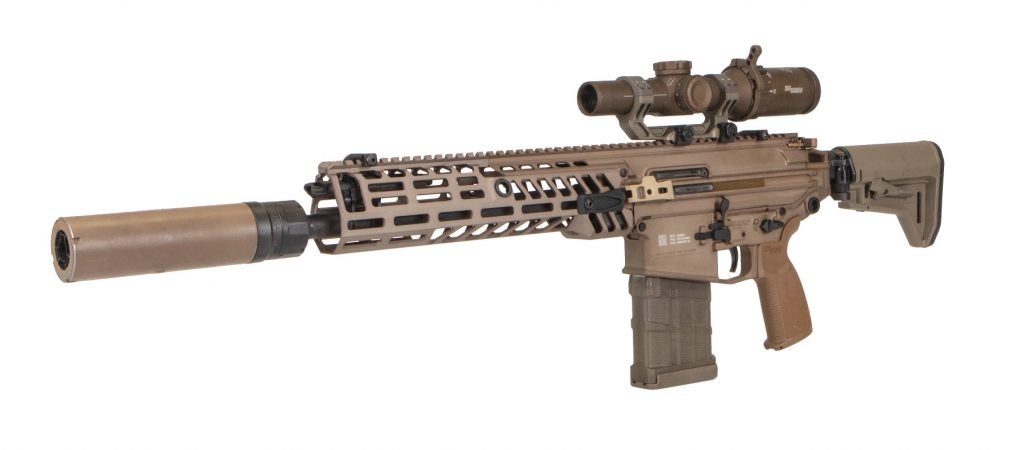
Ammunition
Brigadier General Boruff, Joint Program Executive Officer, Armaments and Ammunition, emphasised that the NGSW program represented the US Army’s first major calibre and cartridge adoption in 65 years. He explained that in terms of ammunition production SIG Sauer will initially lead over the next 2-3 years as the Army stands up new production facilities at the Lake City Army Ammunition Plant. While interim facilities will be used to immediately begin 6.8mm production at Lake City a new building at the plant is being built for new production lines for 6.8 projectiles, case components and propellant. This new facility is planned to open in 2026 and will steadily ramp production. Once the Army has established its production facilities SIG Sauer will become a second source manufacturer with Lake City AAP taking the lead by around 2029.
Additionally over the next 24 months new variations of the 6.8mm round will be developed in addition to the 6.8mm General Purpose round which was developed for the weapon systems using the Army’s in-house developed projectile. The new varieties of 6.8mm will include blank, inert training rounds and a reduced range variant.
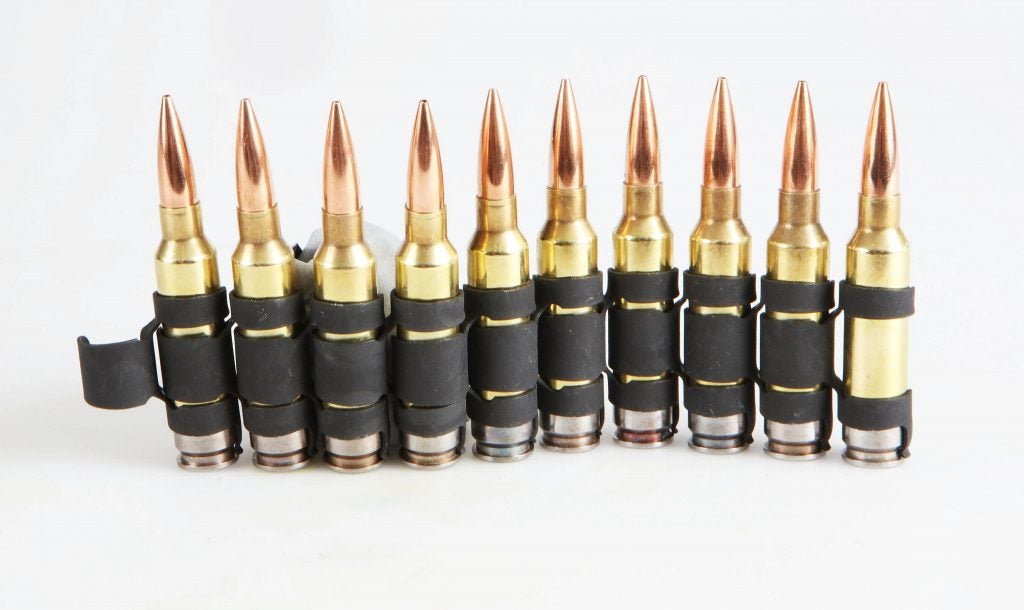
Interestingly, Brigadier General Boruff also noted that his team was not ‘allowed’ to work with any of the submitting vendors until after the downselect. He said “the exciting point for us is that we can now work with SIG Sauer, we can refine some of the pressures in the weapon which will enhance the ammunition as we move forward.” As the US Army builds up its ammunition manufacturing capability Brigadier General Boruff explained that weapons and ammunition refinement will continue.
150 million rounds of ammunition through the life of the 10 year contract is the anticipated maximum of the production capacity. Boruff explained that production of various varieties of 5.56x45mm and 7.62x51mm ammunition currently in production at the Lake City plant will not be impacted and will continue at normal rates for years to come.
It was acknowledged that all three of the submitted 6.8mm cartridges were lighter than 7.62x51mm – as requested by the Army. Brigadier General Boruff stated that the deciding factor in terms of ammunition was that SIG Sauer’s 6.8mm metallic hybrid cartridge was lighter than a standard 7.62x51mm cartridge but provided increased capability. The panel declined to give specifics on the ammunition’s performance and capabilities beyond saying that it “provides greater energy at target, close in and far out, than our current systems do.”
Weapons Production
The 10-year firm-fixed-price follow-on production contract with SIG Sauer allows for a potential peak procurement of 250,000 weapon systems. The initial $20.4 million production contract is for around 40 weapons, the funds will largely be spent on establishing and testing the production line, and according to Colonel Madore to “establish and prove out the production lines at SIG Sauer… and get them to a consistent quality level.” The ceiling value for the 10 year contract with SIG Sauer is $4.7 billion, over 10 annual ordering periods.
According to Colonel Madore, however, this number is not the Army’s initial goal, it allows for other branches to potentially option production if they decided to select the NGSW systems. The Army’s actual aims are based on the size of the close combat force, which according to Brigadier General Larry Burris Jr. numbers around 120,000 personnel. We know from released budget estimates that through fiscal year 2023 the Army hopes to procure just under 30,000 weapons.
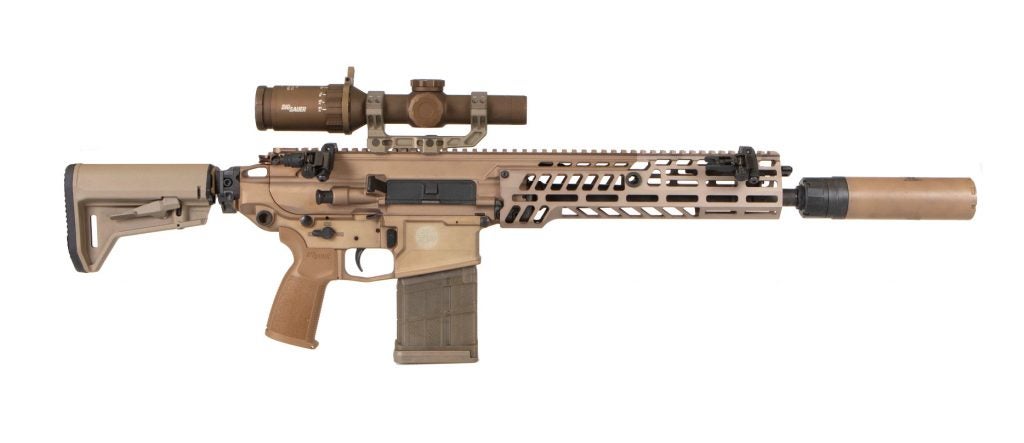
Weapons and Fire Control Unit
SIG Sauer’s rifle, to be known as the XM5, and automatic rifle, to be known as the XM250, will replace the M4 and M249 in service with close combat forces. Brigadier General Burris explained that the Army considers the 6.8mm-chambered XM250 a light machine gun, despite it offering capabilities closer to the M240 medium machine gun. The weapons will transition from the XM classification to a M type-classification once the weapons have been substantially fielded. Brigadier General Burris declined to outline the rifle and automatic rifle’s specifications or capabilities in terms of weight, length, operating systems and effective ranges. Colonel Madore did, however, give some comparisons to in-service weapons. He stated that unloaded the XM5 is “about 2lbs over the M4” while the XM250 is 4lbs lighter than the M249.
The Fire Control Unit (FCU), the XM157, was selected in January 2022 with Vortex winning the contract to supply the aiming system which will pair with the NGSWs. Colonel Madore explained that a lot of the initial testing of the FCU submissions was carried out on current in-service weapons before it was paired with the NGSW prototypes. Madore said “there was soldiers in the loop, lots of feedback, lots of technical testing.” The programs ran simultaneously and Madore confirmed that the weapon and FCU prototypes “did come together during a limited user evaluation… but they will be fielded together as a total system.” An example of the FCU was not present at the panel. The US Army’s general adoption of suppressors for its service weapons for the first time was not discussed by the panel.
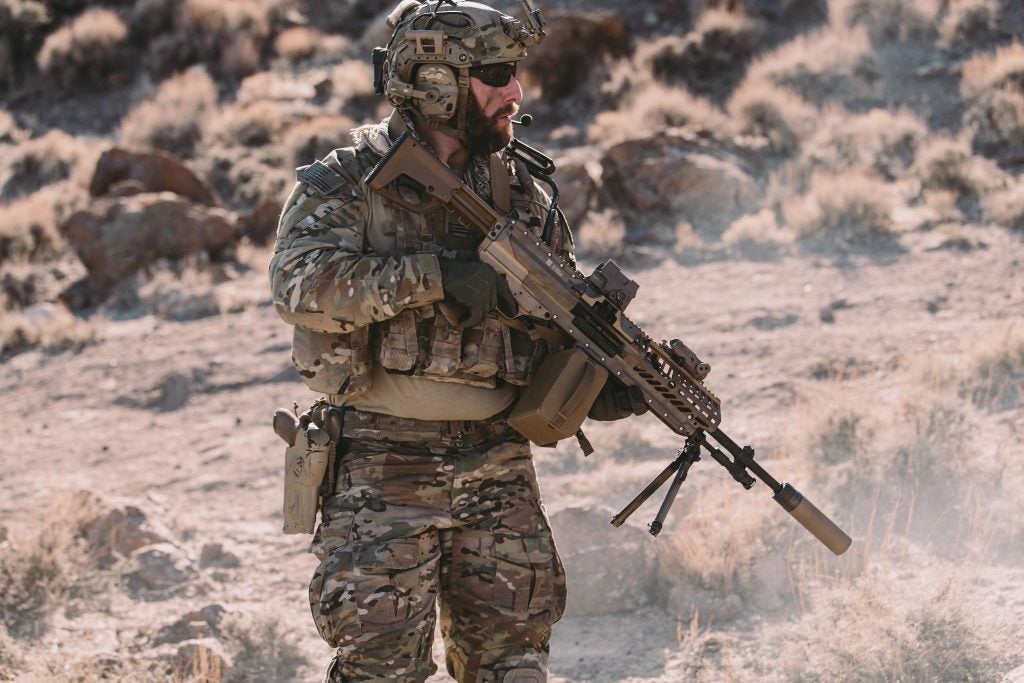
Fielding
The panel emphasised that in terms of fielding the driver is the production and stock of ammunition available. The levels of ammunition in hand for training and potential war reserves dictate the rolling out of the weapon systems to close combat force units including infantry and cavalry scouts.
Brigadier General Burris confirmed that procurements for the weapons will be approximately 107,000 XM5s and 13,000 XM250s. From recently published budget documentation we know that in fiscal year 2023 15,348 XM5s and 1,704 XM250s will be procured, along with FY23 its 11,994 XM157 FCUs at a total cost of $221 million.
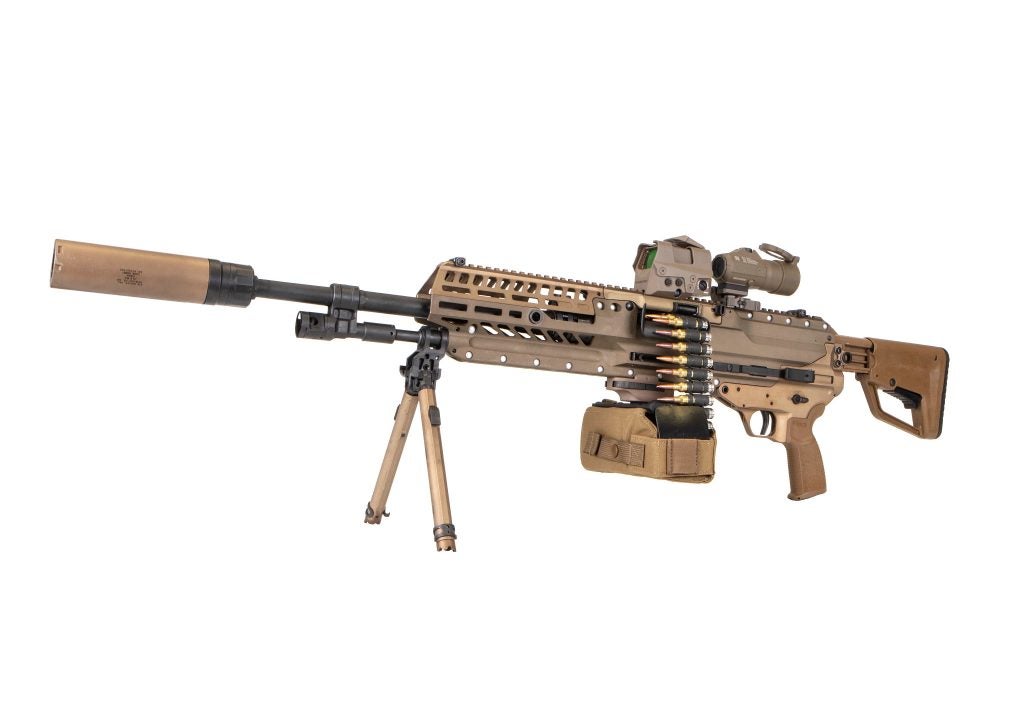
When asked which unit specifically would be issued the weapons first Brigadier General Burris said that this was a decision for Army senior leadership. The general also emphasised that the M4A1 and M249 will continue in service with non-close combat force units and specialisations for years to come. Interestingly, Burris suggested that issue would be done along the lines of military occupational specialty code (MOS) rather than on a unit basis, stating that a company supply sergeant in a close combat unit would still carry an M4A1 carbine. This raises logistical questions for the supply chain of close combat force units in the field.
In terms of training with the new weapons an interesting aspect of the 6.8mm rounds capabilities is that a reduced range variant of the round will be needed to train and qualify on existing ranges. Brigadier General Burris explained that “we will continue to use our current ranges on our installations,” and that in terms of training doctrine will evolve as the weapon systems mature and are fielded with training tailored to the systems but based on current practices.

